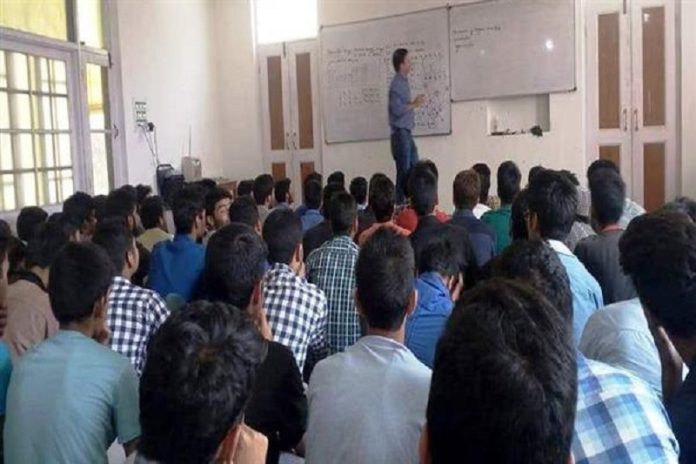Dr. Rizwan Rumi .
For years, government schools in Jammu and Kashmir were seen as underperforming, lacking both infrastructure and quality education. However, the narrative has changed significantly. Today, these schools are being transformed with modern facilities, smart classroomsand most importantly, a new generation of passionate and dedicated teachers who are working tirelessly to improve the learning environment for students.
The Driving Force Behind Change
A major factor behind this transformation is the commitment of government teachers. Unlike the past, where they were often viewed as unmotivated, today’s government school teachers are highly qualified, trained and deeply invested in their students’ futures. Many have undergone professional development programs that have equipped them with modern teaching methodologies.
Teachers are going beyond textbooks, incorporating digital tools, activity-based learningand innovative classroom strategies to make education more engaging. They actively participate in training programs and continuously update their knowledge to provide students with the best possible learning experience. Many educators are taking personal initiatives to make classrooms more interactive and appealing by introducing creative teaching techniques, including smart learning modules and real-life application-based learning.
Leading by Example: Enrolling Their Own Children in Government Schools
A clear testament to the growing quality of education in government schools is that many teachers are now enrolling their own children in these institutions. This shift signifies their confidence in the system, proving that the quality of education in government schools is at par withand in some cases better than, private schools.
This trend is driven by the improved curriculum, digital learning tools, well-qualified facultyand government initiatives that ensure holistic development. Parents, including government school teachers, now recognize that these schools offer well-rounded education with access to modern technology, sportsand extracurricular activities.
Government Initiatives That Are Making a Difference
Several initiatives have been launched to further strengthen the education sector in Jammu and Kashmir, ensuring schools are well-equipped and students receive a high-quality learning experience.
1. PM SHRI Schools: Revamping Education Infrastructure..
The Pradhan Mantri Schools for Rising India (PM SHRI) scheme is playing a key role in improving government schools across Jammu and Kashmir. In 2024-25 financial year, 389 schools have been selected for up gradation with better classrooms, digital learning tools, librariesand sports facilities. These schools are being developed as model institutions that emphasize skill-based education and employability.
2. Kindergarten Expansion for Stronger Foundations
Early childhood education is a key focus area, with 2,176 new kindergartens being established across J&K. This ensures that young children receive a strong educational foundation, preparing them for future learning.
3. Mid-Day Meal Scheme with Fortified Rice..
The government has introduced fortified rice in mid-day meals for 8.95 lakh elementary students, addressing nutritional deficiencies and improving student health. This initiative ensures that students not only receive education but also proper nourishment, leading to better focus and academic performance.
4. Beti Anmol Scheme: Empowering Girls Through Education
Encouraging girl education remains a priority and under the Beti Anmol Scheme, ₹5,000 scholarships are being given to girls from economically weaker backgrounds. This financial support has significantly increased female enrollment rates in government schools.
5. Digital and Vocational Learning for Future-Ready Students
To prepare students for the modern world, the government is setting up 2,584 schools with ICT (Information and Communication Technology) labs and smart classrooms. Additionally, 43 robotic labs and 30 virtual reality labs are being introduced bringing advanced technology into the education system. Furthermore, vocational education programs have been expanded to 554 new schools, providing students with practical skills that enhance employability.
6. New India Literacy Programme (NILP) for Adult Learning
Education is not just limited to school students— the government is also focusing on adult literacy. The New India Literacy Programme (NILP) aims to make 3.5 lakh adults literate in 2024-25, ensuring learning opportunities for all age groups.
Changing Perception of Government Schools
These large-scale reforms, combined with the dedication of teachers, have significantly improved the perception of government schools in Jammu and Kashmir. Parents who once hesitated to send their children to government schools are now choosing them over private institutions, appreciating the improved quality of education and infrastructure.
The affordability of government schools, coupled with high-quality teaching and modern facilities, has made them a preferred choice. The increasing enrollment numbers and the growing participation of teachers in educational reforms are clear indicators that the education system in Jammu and Kashmir is on a path of sustained progress.
A Promising Future for Education in Jammu and Kashmir
The transformation of government schools in Jammu and Kashmir is not just about infrastructure upgrades—it’s about creating an environment where students can thrive, learnand grow. The commitment of teachers, supported by well-structured government policies, is playing a pivotal role in shaping the future of education in the region.
With continuous investment in education, training and technology, government schools are set to become centers of excellence, ensuring that every child in Jammu and Kashmir has access to quality education, regardless of their economic background. The future of education in the region looks brighter than ever, thanks to the collective efforts of teachers, policymakers and the community.
The transformation we are witnessing today is not ju


